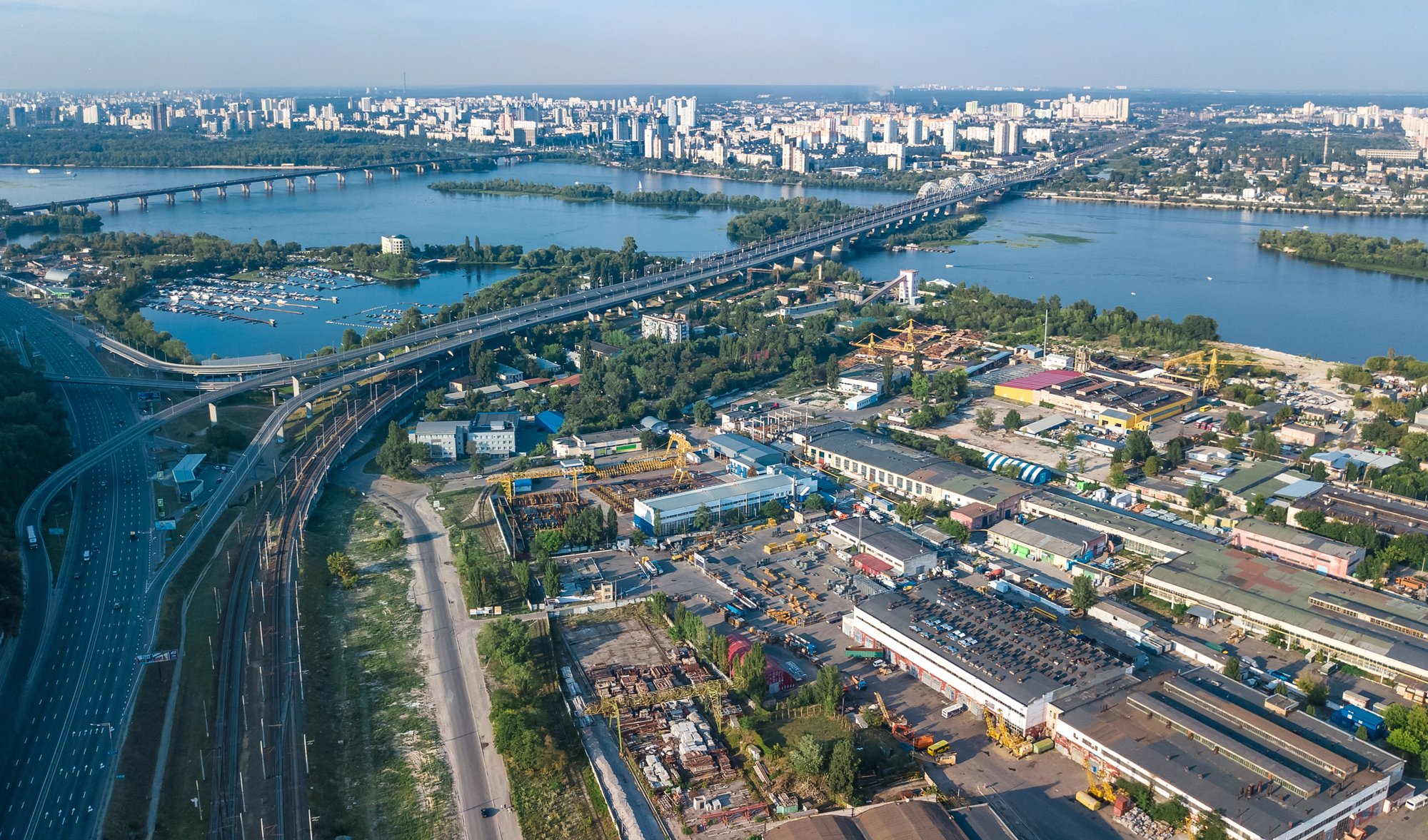Ukrainian workers are regarded as highly educated and skilled, entrepreneurial, hard-working and even able to hold multiple jobs at the same time. Nevertheless, abroad Ukraine is continuously considered to be a poor country, not attractive as a country of work destination from developed economies. This short paper discusses whether informal employment may be a reason for this.
Size of wages does matter, especially when we, Ukrainians, go abroad and (try to) afford coffees, dinners and gym subscriptions. Conversion of our local money to euros and dollars in France or in the USA would be probably unnoticeable had this proportion been at least twice as more. But if we pay let’s say UAH 20 for espresso in a Kyiv simple coffee shop and 3 euros in the same one in Paris (which is about UAH 90), there is a food for thought: Do we earn enough in Ukraine to be capable of paying our bills abroad? And what is the reason of this difference?
International Labour Organization (ILO) compares wages in different countries by PPP rate and reports that average wages in developed economies in 2014-2015 were estimated at the level of $ (PPP) 3,000, in developing economies (where belongs Ukraine) – $ (PPP) 1,000, and world average – $ (PPP) 1,600 (ILO, 2014). So, the Ukrainians earn at least three times less than the French or Germans.
Tendency also shows that average wages in emerging and developing economies are slowly converging towards average wages in developed economies, and during this transition period in developing economies, wages act as a key component of strategies to reduce poverty and inequality. At the same time, Ukraine experiences one of the highest real wage growth among transition countries with 14.4 per cent in 2012 and 8.2 per cent in 2013 (ILO, 2014), even though in 2014 and 2015 the real wages decreased by 6.5 and 20.2 per cent respectively (ДССУ, 2016). A reasonable Gini index of 24.6 which measures the extent to which the distribution of income (or consumption expenditure) among individuals or households within an economy deviates from a perfectly equal distribution. Gini index shows that for Ukraine this distribution is not unequal between the poor and the rich (World Bank, 2013), which partly may be due to the underreporting by the rich.
So, there is a light in a tunnel, but perhaps not that apparent, because the same high number of the Ukrainians choose to emigrate. Ukraine is ranked seventh as a sending country among all the countries in the world with over 5.5 mln international migrant population originating from Ukraine (Migration Policy Institute, 2013). What is highly disappointing that the Ukrainian emigrant is usually a person younger than 30 years old, with higher education, unmarried or divorced (Міжнародна організація міграції, 2011). And it is highly reasonable to state that these young and educated Ukrainians who could have invested enough effort in our Homeland do emigrate to earn more (as job related reasons to emigrate prevail according to the Ukrainian Longitudinal Monitoring Survey (ULMS), World Bank, wave 2007), instead their income abroad is much higher than the volume of wages of Ukrainian economy (Кириленко, 2011).
Well, maybe it matters not how much we earn, but how satisfied with our life we are. However, life satisfaction perception in Ukraine is one of the lowest among transition countries and equals 3.85 in 2006 (with 1 being the lowest and 10 – the highest rank) and 3.62 in 2010 (according to the Life in Transition Survey, EBRD). Both in the year 2006 and 2010 Ukraine was on the bottom of 25 countries ranking. This proves that the Ukrainians are highly unhappy with our wage level.
When it comes to obtaining a job, if the labour market is not yet highly developed, the barriers to entry/exit and price for registration do matter, that is why informal employment is a big if not the biggest challenge for Ukraine. Informal employment in our country has increased over the period 2000-2007 from 14.8 per cent up to 22.3 per cent of total employment for people aged 15-70, namely 4.7 million people. The share of informal private entrepreneurs (“physical entities”) in 2014 is striking and reaches 72.7 per cent of self-employed, the share of informally employed salaried workers was 16.1 per cent (ДССУ, 2015). What is interesting, that the incidence of informal employment in Ukrainian labour market decreases with educational attainment for both males and females (ETF, 2009).
If we regard labour market participants as smart and efficient decision makers, we should relate to human capital theory which declares labour as “a conglomeration of heterogeneous human beings differing by their productivity” (Mincer, 1974). In this respect, investing in human capital should be the main explanatory variable of income distribution. And the occupations that require more training will be better remunerated (Teixeira, 2006).
Using the data of the Ukrainian Longitudinal Monitoring Survey (ULMS) of statistically representative Ukrainian working-age population, the individuals are divided into five statuses of employment in order to observe heterogeneity of net income person: formal employee, informal employee, formal self-employed, informal self-employed and unemployed. The data shows that income does vary significantly across categories, which proves labour income inequality, being the highest for formal self-employed (UAH 1,733) followed by informal self-employed (UAH 989) and formal employees (UAH 916), and the lowest – for informal employees (UAH 798). For the year 2007, minimum salary was UAH 440 on average. Income distribution varies also within the four categories. The most dispersed income is for formal self-employed with a median of UAH 1,000 and standard deviation of UAH 2,341, which is twice as high as the income itself. Formal employees experience the lowest income dispersion.
Educational attainment indicates that workers with its highest level are formal self-employed and formal employees (14 and 13 years of total education years respectively). Interestingly, unemployed are not less educated than informal self-employed and informal employees.
This essay presented a short analysis of the Ukrainian labour market with respect to whether it is diversified within formal and informal employment. We showed that in Ukraine labour remuneration differs significantly among these two labour segments, so probably it does not matter how talented, hard-working or aspiring you are until labour market is properly developed to offer more equal wages inside the country between formal and informal workers, as well as higher wages in order to be more competitive when we cross the border.
References
[1] European Training Foundation. (2009). ENPI 08-14 Black Sea Labour Market Reviews. Ukraine Country Report.
[2] International Labour Organization. (2014). Global Wage Report 2014 / 15 Wages and Income Inequality. Gene: International Labour Office.
[3] Migration Policy Institute. (2013). International Migration Statistics.
[4] Mincer, J. (1974). Schooling, Experience, and Earnings. National Bureau of Economic Research, 167.
[5] Teixeira, P. (2006). Jacob Mincer and the Centrality of Human Capital for Contemporary Labour Economics, 1–17.
[6] World Bank. (2013). GINI Index Statistics.
[7] Державна служба статистики України. (2016). Демографічна та соціальна статистика.
[8] Державна служба статистики України. (2015). Економічна активність населення України 2014.
[9] Кириленко, О. П. (2011). Фінансові важелі подолання бідності в Україні: Монографія. Тернопіль: Тернопільський національний економічний університет.
[10] Міжнародна організація міграції (МОМ). (2011). Міграція в Україні. Факти і цифри. Київ.
The winner of MindSketch March Competition
Attention
The author doesn`t work for, consult to, own shares in or receive funding from any company or organization that would benefit from this article, and have no relevant affiliations



